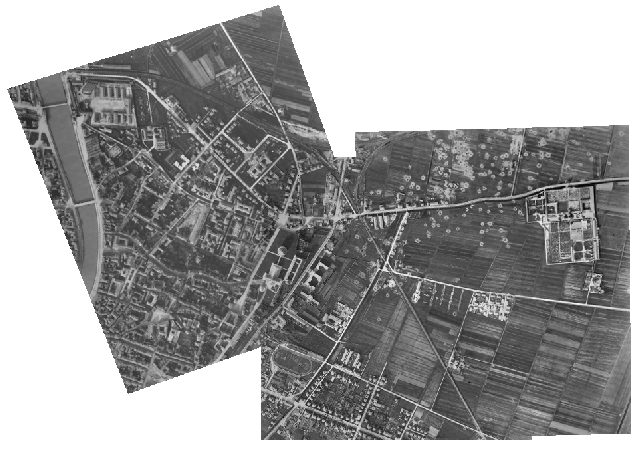
|
Anders Brun
Partners: Bo Malmberg, Michael Nielsen, Dept. of Human Geography, Stockholm University; Anders Wästfelt, Dept. of Economics, SLU
Funding: S-faculty, SLU
Period: 0901-
Abstract: This project is a collaboration with researchers at SU and SLU. It aims to derive information about the landscape (rural and city) from satellite images. The project focuses on using texture analysis of images rather than only pixelwise spectral analysis to segment the image into different meaningful regions.
Cris Luengo
Partners: Olle Terenius, Ingemar Fries, Joachim Rodrigues de Miranda,
Eva Forsgren, Barbara Locke, Dept. of Ecology, SLU; Fredrik
Liljeros, Dept. of Sociology, Stockholm University
Funding: Åke Wiberg foundation
Period: 1003-
Abstract: In this project, we are creating a system in which we can
observe a portion of a bee hive (containing about one thousand
individuals, each tagged with a unique identifier on its back) over days
or weeks. Bees will be free to enter and exit the hive, and the
environment will be set up to be as natural as possible for the bees.
The purpose is to observe the natural behaviour of the bees, and record
the type and duration of interaction between individuals. In 2012,
Ziquan Yu finished his MSc thesis within this project, developing a new
tag, and algorithms to track and read those tags. See Figure 19.
Anders Brun, Ewert Bengtsson, Fredrik Wahlberg
Partners: Lasse Mårtensson, Dept. of Scandinavian Languages, UU; Mats Dahllöf, Dept. of Linguistics and Philology, UU
Funding: Faculty of Languages and Humanities, UU
Period: 1008-
Abstract: Optical character recognition (OCR) is still, after nearly 100 years of research, an active area of research. Currently one of the frontiers is the recognition of handwritten text (HTR), in particular from historical documents. During 2012 a paper on text line segmentation was accepted at ICPR. A grant application for 13.7M SEK was sent to Vetenskapsrådet and it was accepted in late 2012. It will finance three senior researchers working part time, two PhD students and a technical/administrative assistant for four years.
Cris Luengo
Partners: Lantmännen Lantbruk, Lidköping & Uppsala; Maxx automation AB, Uppsala
Funding: Lantmännen Lantbruk
Period: 1006-
Abstract: In this project we develop novel algorithms and systems to
assess the quality of a batch of grain (oats, barley, wheat), based on
the Seedscanner 2003 seed sorting robot from Maxx automation AB. We have
developed new hardware to modernize the imaging, and have been creating
new algorithms to identify various forms of defects that affect seed
quality in different ways. In 2012 a second MSc student finished his
thesis within this project.
Anders Hast
Partners: Salvatore Minutoli, Alessandro Prosperi, Alessandro Lugari, Maurizio Tesconi, Beatrice Rapisarda, Matteo Abrate, Clara Bacciu, Davide Gazzé, Sergio Bianchi, Istituto di Informatica e Telematica (IIT), Pisa, Italy
Abstract: The GeoMemories project is aimed at making publicly available, through web access, heritage preserved in the archives of Aerofototeca
Nazionale in Rome, which contains photographs covering the Italian
territory from the end of 1800 till modern days. The web application
is based on google earth but oriented towards the management of the
temporal variable, so that geospatial changes can be monitored over
time. The historical aerial photos need to be digitized, illumination
corrected, orthorectified, georeferenced and finally stitched together.
Anders Hast spent one year (2011) at IIT, CNR in Pisa Italy as an ERCIM fellow working with image processing and computer vision aspects in the project. Since returning to Uppsala University in January he is a research associate at IIT, CNR and continues working with the project.
So far four publications have been published and two others have been submitted for publication. One paper deals with the problem of how to remove uneven illumination in the historical aerial photos that are to be stitched together. Two others describe how to remove false matches in the stitching process in an efficient way. This is something we continue to work with in the project as well as how to improve feature matching in general so it will be possible to match historical photos with modern satellite images in order to perform georeferencing.
Figure 20 shows the photos from two different flights over Pisa, Italy during WWII, which are automatically stitched together.

|
Martin Simonsson, Carolina Wählby
Partners: Hans Karlsson, Elias Rudberg, Ola Spjuth, UPPMAX
Funding: SciLife Lab Uppsala; eSSENCE; Dept. of IT, UU
Period: 1110-
Abstract: Life science applications generate a huge amount of image data that has to be stored and analysed in an efficient way. This project
is focused on providing easy access to high-performance computers and large-scale storage. In collaboration with Uppsala Multidisciplinary Center for Advanced Computational Science (UPPMAX) image analysis software are being installed and maintained on the cluster. Database solutions with easy web access to image data are also being developed and maintained. This project has also provided workshops and seminars to help life science researchers to get started and use the resources.
Cris Luengo
Partners: Bernd Rieger, Lucas van Vliet, Quantitative Imaging Group,
Delft University of Technology, The Netherlands;
Michael van Ginkel, Unilever Research and Development, Colworth
House, Bedford, UK
Funding: S-faculty, SLU
Period: 0807-
Abstract: DIPimage is a MATLAB toolbox for scientific image analysis,
useful for both teaching and research (http://www.diplib.org). It has been in active development since 1999, when it was created at Delft University of Technology. In 2008, when Cris Luengo moved to Uppsala, CBA was added to the project as a main development site. DIPlib, created in 1995, is a C library
containing many hundreds of image analysis routines. DIPlib is the core
of the DIPimage toolbox, and both projects are developed in parallel.
Because DIPlib provides efficient algorithms, MATLAB is useful for image
analysis beyond the prototyping stage. Together, MATLAB and DIPimage
form a powerful tool for working with scalar and vector images in any
number of dimensions. The year 2012 saw the release of version 2.4, with several new features including new measurement functionality and faster arithmetic operations.